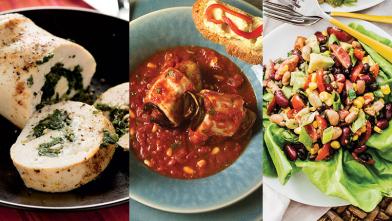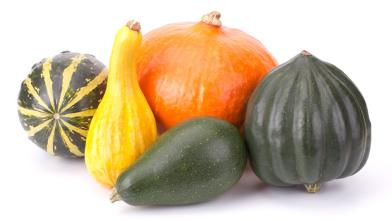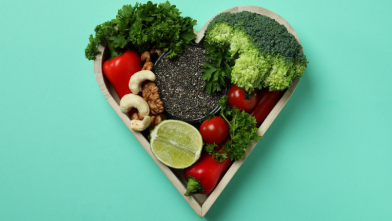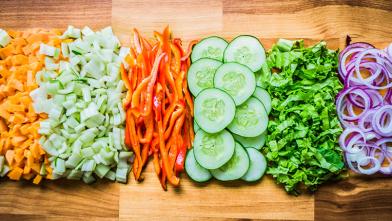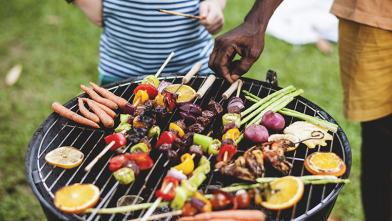We all know eating veggies is good for us—their fiber alone can help you manage your weight and heart health. You’ll find two types of vegetables at the store: starchy vegetables (like peas, potatoes, and corn) and non-starchy vegetables (like broccoli, eggplant, and peppers). While all vegetables offer important nutrients for people with diabetes, you should aim to fill half your plate with non-starchy vegetables for a balanced meal that doesn’t spike your blood glucose (blood sugar).
With all this in mind, eating the same veggies in the same way every day can often become boring. Keep reading for some quick tips on how to cook veggies the diabetes-friendly way and try something new to keep things interesting.
Are fresh, frozen, or canned veggies best?
The beauty is that all three can be part of a healthy eating plan. Many enjoy the taste and texture of fresh veggies, especially when they’re in season. However, many fresh veggies require you to use them quickly or they’ll spoil. On the flip side, frozen and canned options offer convenience and a longer shelf life, and they have been picked and packaged at their peak of freshness.
Frozen and canned vegetables may have added ingredients that could increase their sodium and fat amounts. Look for frozen veggies that contain no ingredients other than the vegetable itself. When you prepare them, you can add your own flavorings, like herbs and spices. For canned varieties, choose no- or low-sodium options with minimal ingredients. Drain and rinse them before eating if the can contains sodium.
How to Cook Veggies
Different ways of preparing vegetables can bring out different flavors and textures. Here are some methods to test out in your kitchen and discover your favorite way of preparing veggies.
- Roasting
Set your oven to 425degrees F and plan to roast your veggies for 20 to 30 minutes depending on the vegetable and how well you like them cooked. Try cutting your veggies into 1-inch pieces as some, like carrots, beets, and potatoes, take more time to soften the bigger they are. Toss them with a healthy oil spray (like olive, canola, or avocado oil) and herbs and spices, and add them in a single layer on a baking sheet. Try cooking a pan of roasted veggies at the beginning of the week and use them in your meals over the next several days.
Pro tip: When roasting frozen vegetables, put your baking sheet in the oven while it preheats. Then you can add the vegetables to the hot sheet to help them cook and crisp up.
- Microwave steaming
Steaming veggies (fresh or frozen) doesn’t require extra kitchen equipment, you can do it in your microwave! Using a microwave-safe dish, add your veggies along with two to four tablespoons of water. Every microwave is different, so start by microwaving for two to three minutes and increase as needed until your veggies are tender. Firmer vegetables like broccoli will need more time, but thin veggies like spinach will steam quickly.
- Sautéing
Adding veggies to a hot skillet can be a simple but delicious prep method. First, heat up a little bit of oil with a high smoke point, like avocado, peanut, or canola oil. Next, add flavoring like diced onions or minced garlic and allow them to begin cooking before adding other veggies. Adding some water can help firmer veggies soften.
Pro tip: Veggies with shorter cooking times are green beans, asparagus, summer squash, and zucchini. Veggies with medium cooking times are broccoli, parsnips, and butternut squash. Long cooking times are more likely for cauliflower (unless it’s riced), Brussels sprouts, and potatoes. Add veggies with the longest cooking time to your skillet first and sauté for several minutes before moving to the medium and short cooking time veggies.
Easy Veggie Recipes
Bell peppers are the star of the show in this simple but flavorful dish. Packed with vitamins, bell peppers are a colorful way for a person with diabetes to add a touch of sweetness to a meal. Learn how to roast peppers quickly and easily with this recipe.
Garlic Sautéed Spinach and Kale
Are you not sure how to cook kale or spinach? Try this delicious and easy dish for a nutritious addition to your dinner. Leafy greens are packed full of vitamins and fiber and are low in calories and carbs.
Elevate your diabetes-friendly dining with these delightful Sautéed Thyme Mushrooms. Bursting with flavor and seasoned to perfection, these mushrooms are a tasty addition to any meal. Experience a dish that's both satisfying and supportive of your diabetes management goals.







